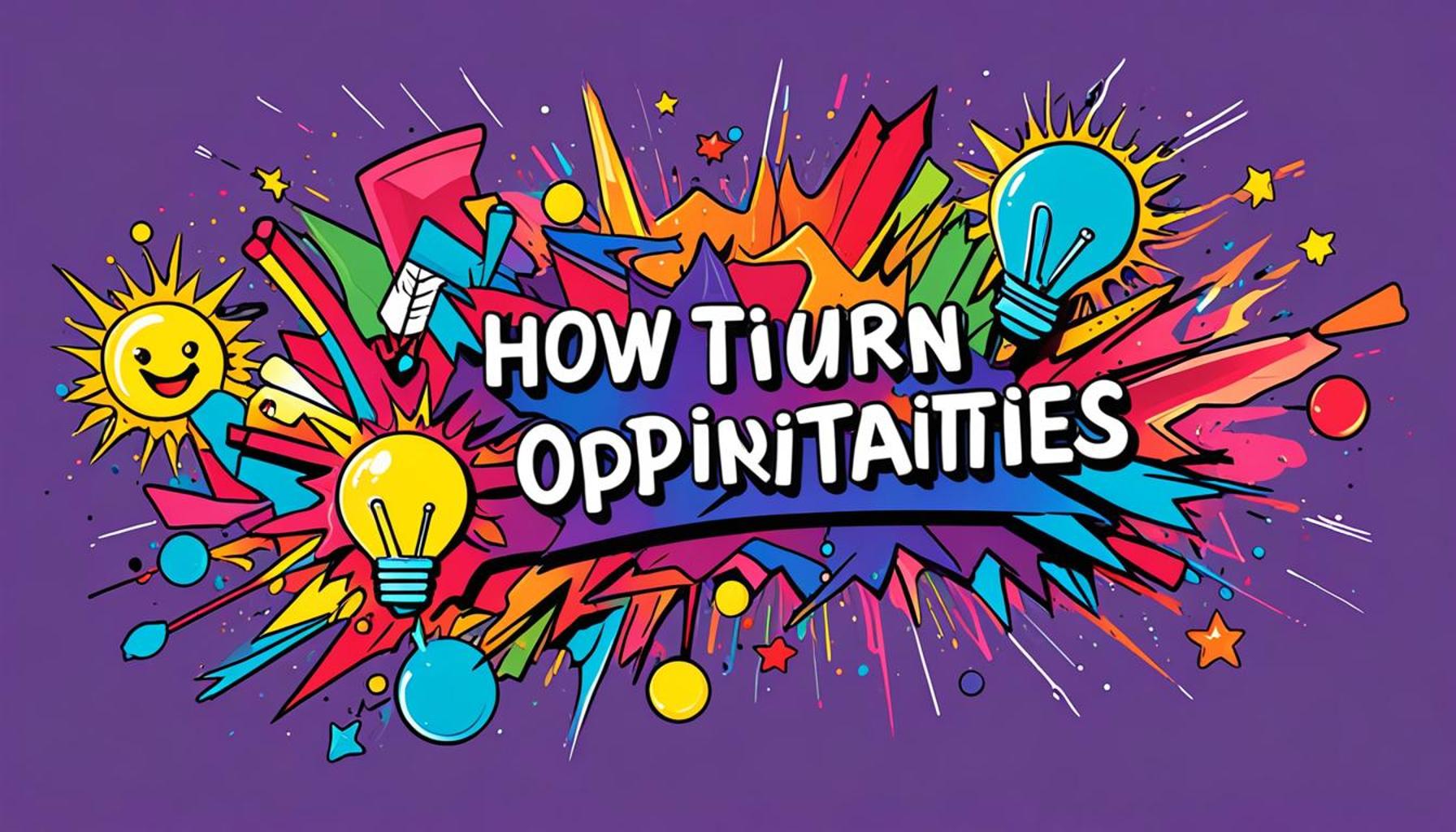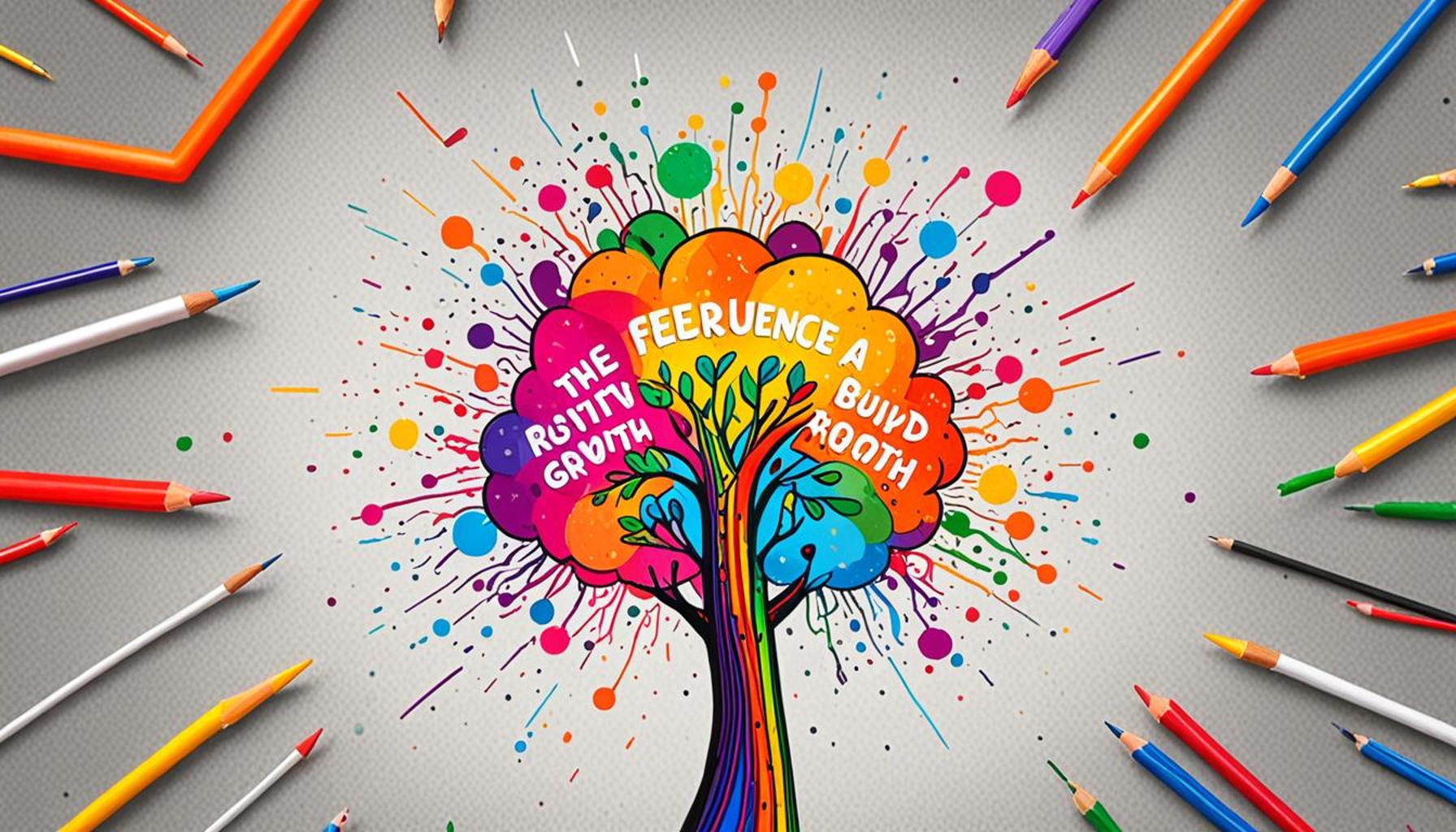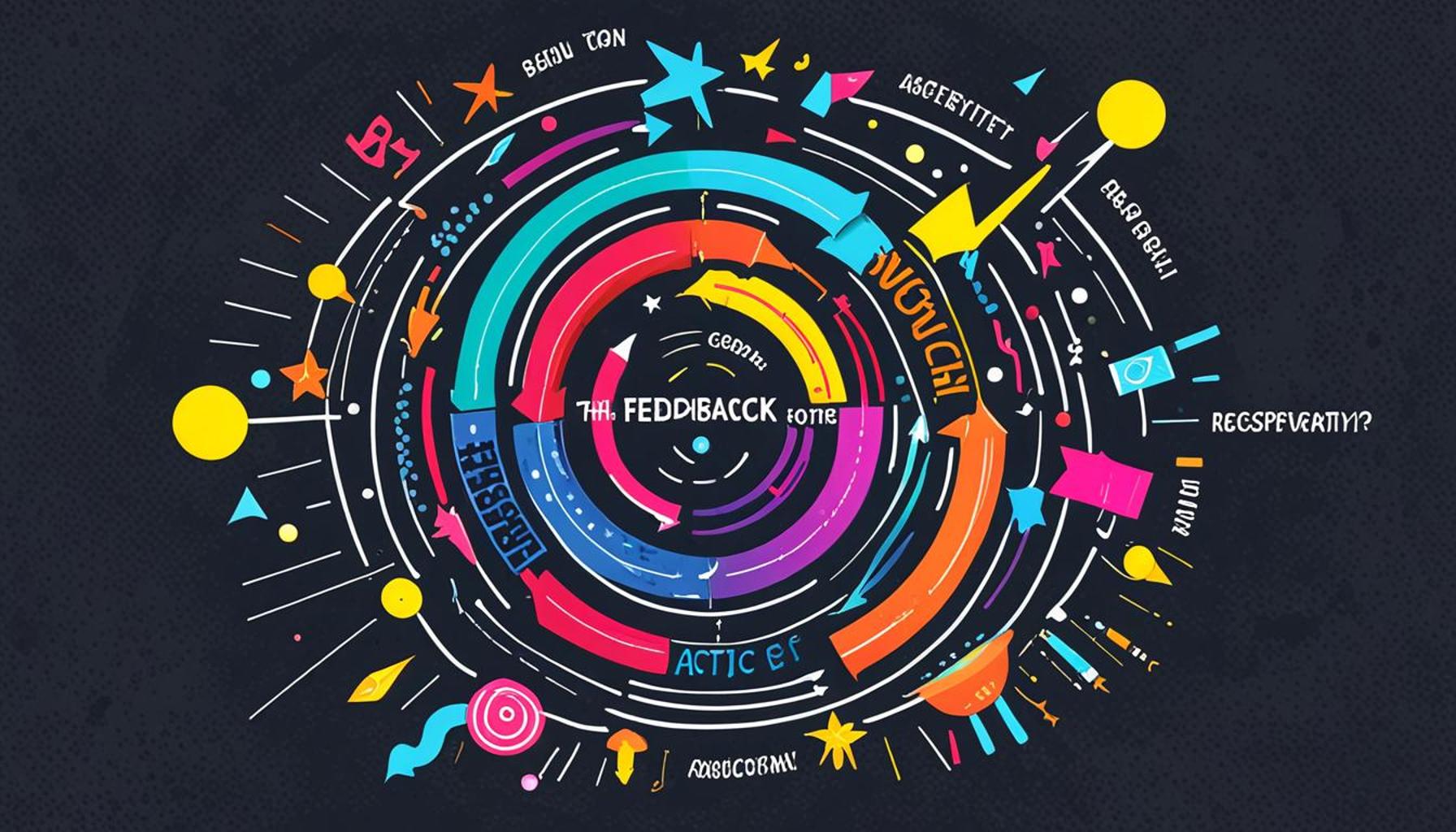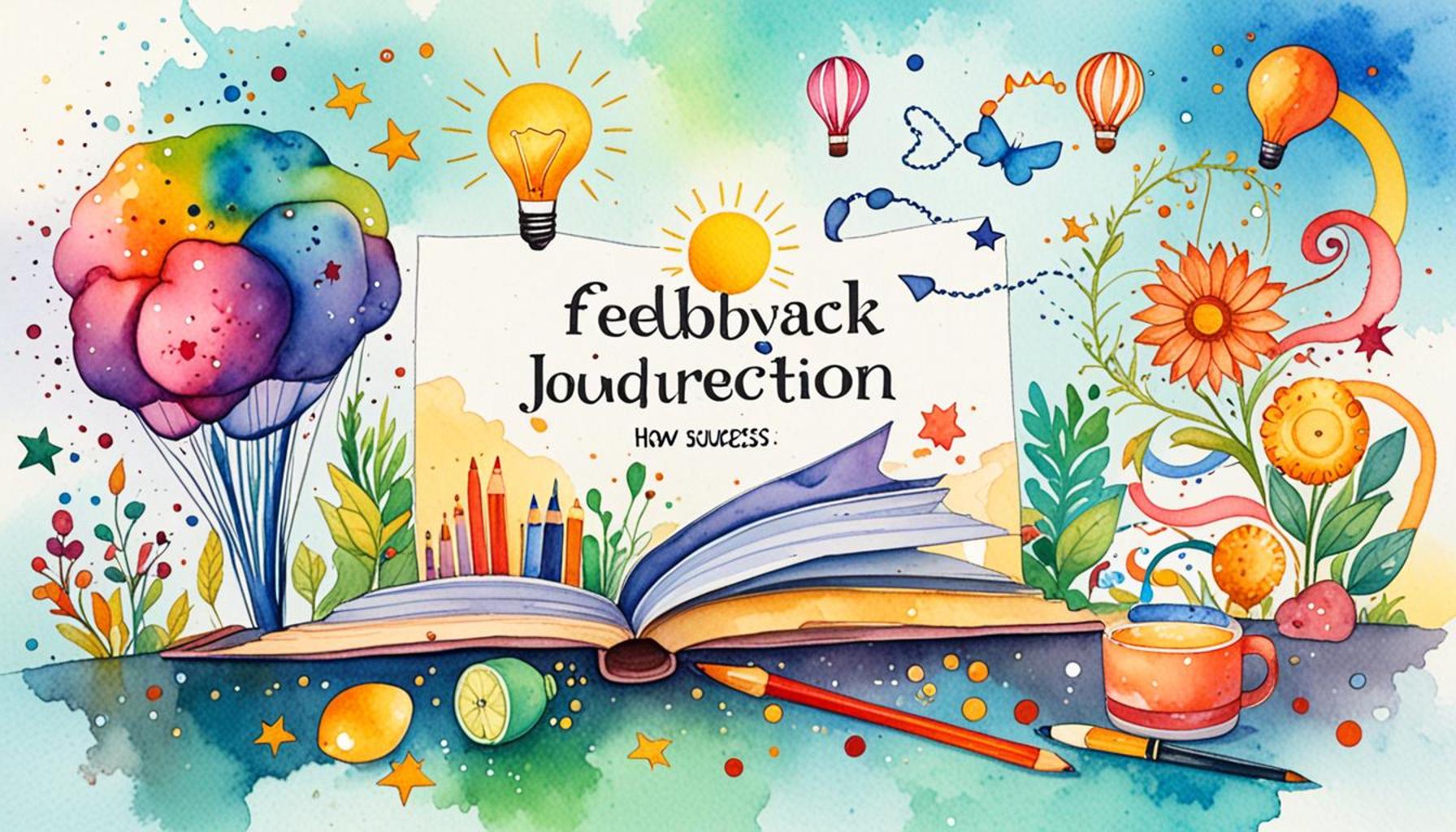Turn Criticism into Learning Opportunities Effective Feedback Strategies

In today’s fast-paced world, the ability to adapt and grow is essential for personal and professional success. One powerful method for achieving this is through the practice of transforming criticism into valuable learning opportunities. By embracing feedback, individuals can foster a growth mindset, which encourages resilience and continuous improvement.
Criticism, often perceived as negative, holds potential gems of insight that can propel us forward. Recognizing this, we can develop strategies to utilize feedback more effectively, leading to enhanced skills and better outcomes. Understanding how to leverage these insights is crucial for anyone looking to thrive in a competitive environment.
Why Feedback Matters
- Encourages self-awareness
- Promotes skill development
- Fosters healthy relationships
In this article, we will explore the Top 5 effective strategies for turning feedback into an opportunity for growth, guiding you on how to not only accept criticism but to embrace it wholeheartedly. Prepare to discover transformative techniques that can redefine your approach to learning and development.
SEE ALSO: Click here to read another article
Top 5 Strategies for Transforming Criticism into Learning Opportunities
Feedback, when embraced in the right manner, can serve as a powerful catalyst for personal growth and development. For many, criticism often signals failure or inadequacy, but it doesn’t have to be this way. By nurturing a growth mindset, criticism is reframed as a stepping stone toward improvement rather than a stumbling block. In this detailed exploration, we dive into five transformative strategies that can help you harness criticism as a force for positive change.

5. Embrace a Change of Perspective
Changing how you perceive feedback is foundational in converting criticism into learning opportunities. Viewing criticism merely as a personal attack confines you to defensiveness and limits your potential for growth. Instead, seeing it as valuable information opens pathways to self-improvement. Here’s how you can start shifting your perspective:
- Ask yourself: What can I learn from this? This simple question is the gateway to deeper understanding and growth.
- Recognize the value: Try to extract insights from every piece of feedback, identifying your strengths and areas for improvement.
- Seek clarification: Approaching your critic with thoughtful questions can unravel their perspective and provide valuable context.
To illustrate, consider a scenario in a workplace setting where an employee receives criticism for a project presentation. Instead of feeling disheartened, the employee might ask insightful questions about specific aspects of the presentation that didn’t resonate well. This not only clarifies the feedback but also paves the way for a more effective presentation in the future.
4. Prioritize Constructive Criticism
Feedback is not one-size-fits-all. The ability to distinguish between unproductive and constructive criticism can significantly influence your responsiveness to feedback. Constructive criticism is thoughtfully composed and aimed expressly at fostering improvement:
- Specificity: Constructive feedback targets particular areas rather than offering vague generalizations.
- Actionable Advice: It goes beyond merely identifying issues and provides tangible steps for improvement.
- Supportive Tone: Encouraging rather than demoralizing, it builds self-esteem and motivation.
For instance, consider a sports coach who, instead of simply telling an athlete they need to perform better, pinpoints specific techniques to enhance, suggests drills, and maintains a positive encouragement. Such feedback can be transformative, leading to measurable improvements in performance.
3. Practice Active Listening
Active listening forms the backbone of effective communication and is critical when dealing with feedback. Engaging in active listening involves being fully present and attentive to what the other person is communicating, free from distractions or the urge to prepare your defense. Here are key techniques to bolster your active listening:
- Maintain eye contact: This demonstrates engagement and respect toward the feedback giver.
- Summarize your understanding: Restating what you heard reaffirms your comprehension and clears up any misunderstandings.
- Ask questions: By seeking further information, you deepen your understanding and often uncover actionable insights.
Imagine a teacher offering feedback to a student on their writing skills. By actively listening, perhaps even taking notes, the student will be able to identify specific areas to work on. This engagement not only enhances the learning experience but also fosters a constructive relationship with the teacher, paving the way for future improvements.
2. Reflect and Evaluate
Receiving feedback is just the beginning; reflecting on this feedback helps transform it into meaningful action. The process of reflecting and evaluating involves deliberate contemplation on the feedback’s applicability to your goals and values. Consider the following evaluative steps:
- What did I learn from this feedback? Identifying the key takeaways streamlines focus.
- How can I implement these lessons? Developing a clear plan of action ensures you make the most of the feedback.
- What emotional responses did it trigger, and how can I navigate them? Recognizing and managing your emotions opens you to transformative insights.
In the realm of entrepreneurship, for example, receiving feedback from peers or investors can be an emotionally charged experience. However, by taking the time to reflect, business leaders can gain clarity on strategic directions and make informed decisions about their ventures.
1. Develop an Action Plan
Finally, the pivotal step in harnessing criticism for growth is crafting a detailed action plan. This involves systematically addressing feedback with clear, actionable goals in mind. Here’s how you can craft an effective action plan:
- Set clear objectives: Define the outcomes you aim to achieve based on the criticism.
- Identify resources: Determine what tools, knowledge, or help you need to meet your objectives.
- Monitor progress: Establish regular checkpoints to assess your progress and make necessary adjustments.
For example, in a creative industry, a designer receiving feedback may set objectives to enhance specific skills, research new design trends, or attend workshops. By tracking progress and marking improvements, the designer can effectively leverage criticism as a springboard for professional growth.
In conclusion, by embracing these five strategies, criticism is transformed from a potential dread into a dynamic tool for development. These steps encourage an introspective exploration, opening the door to personal betterment and continued success.
| Category | Description |
|---|---|
| Emotional Intelligence | Leveraging emotional intelligence allows individuals to process feedback without becoming defensive. This engagement leads to greater self-awareness and fosters an environment where constructive criticism is seen as a pathway to growth. |
| Feedback Analysis | Engaging in thorough feedback analysis involves categorizing feedback into actionable items. By assessing both positive and negative comments, individuals can pinpoint areas for improvement while recognizing strengths to build upon. |
| Iterative Improvement | Applying an iterative approach means regularly implementing feedback and making adjustments to enhance performance. This cycle not only refines skills but also boosts confidence as individuals witness their evolution over time. |
| Collaboration and Open Dialogue | Fostering a collaborative culture where feedback is welcomed from all angles encourages transparency. By promoting open dialogue, teams can cultivate mutual respect and ultimately improve overall effectiveness. |
LEARN MORE: This related article may interest you
Frequently Asked Questions
How can criticism be viewed as an opportunity for growth rather than a personal attack?
Criticism often triggers a defensive reaction, yet reframing it as a chance for personal development can alter this perception. By adopting a mindset that views feedback as a learning tool, criticisms become stepping stones for improvement. Understanding the value behind each critique allows individuals to enhance their skills and strengthen their weaknesses.
What strategies can be applied to effectively utilize feedback?
A well-structured approach to feedback involves several steps. First, practice active listening to fully comprehend what is being said, and clarify any ambiguities. Secondly, separate emotions from facts to analyze the feedback objectively. Lastly, create an action plan by identifying specific areas to work on, setting actionable goals, and monitoring progress over time.
What role does self-reflection play in transforming criticism into a learning opportunity?
Self-reflection serves as a pivotal component in the feedback process. By taking the time to introspect, individuals gain insight into their behavior and performance. This practice leads to an increased self-awareness that can uncover underlying patterns and motivate changes that align with personal or professional growth goals.
How can one differentiate between constructive feedback and unjust criticism?
Constructive feedback is typically specific, focused on behavior rather than personal traits, and offers potential solutions or improvements. Unjust criticism, on the contrary, might be vague and aimed at undermining self-esteem rather than encouraging development. Evaluating the intent behind the criticism and its usefulness can aid in distinguishing between the two.
Can accepting criticism improve team dynamics within an organization?
Indeed, fostering an environment where criticism is genuinely acknowledged and constructively addressed can enhance team dynamics. By promoting transparent communication and mutual respect, teams can transform criticism into a powerful collaborative tool. This approach can lead to improved problem-solving capabilities, innovation, and an overall positive workplace culture.
ADDITIONAL INSIGHTS: Expand your understanding here
Conclusion
In an increasingly dynamic world, the ability to transform criticism into learning opportunities is an indispensable skill. This article has explored the art of leveraging feedback to foster personal and professional growth through a series of well-defined strategies. The crucial takeaways include understanding the intent behind feedback, cultivating a receptive mindset, and implementing structured approaches to integrate constructive criticism.
Firstly, recognizing the value of feedback as a growth tool empowers individuals to approach criticism not as a personal attack but as a stepping stone toward improvement. Embracing this perspective encourages a growth mindset, essential for continuous development. Secondly, fostering emotional resilience allows one to detach emotions and focus on the potential benefits hidden in criticisms.
Additionally, effective communication plays a pivotal role in this transformation process. By seeking clarification and asking questions, individuals can gain deeper insights and develop actionable plans. This paves the way for a more collaborative atmosphere where feedback is shared openly and constructively.
Ultimately, embedding these strategies into our day-to-day activities converts criticism into a constructive feedback loop, fostering a culture of perpetual learning. For professionals and individuals alike, mastering the art of transforming criticism into a vehicle for growth not only enhances performance but also enriches interpersonal relationships.
Further exploration into the intricate dynamics of feedback will undoubtedly yield a plethora of opportunities for personal enrichment. This topic encapsulates the essence of a growth mindset, offering avenues for both self-discovery and improved collaboration. As we continue to adapt and learn, the ability to harness feedback effectively will remain a critical component of successful navigation in diverse environments.


